Nikon announces first macro Z lenses: Nikkor Z MC 50mm f/2.8 & Nikkor Z MC 105mm f/2.8 VR S
posted Tuesday, June 1, 2021 at 11:01 PM EST

Since the Z6 and Z7 cameras launched alongside a trio of lenses in late 2018, Nikon has rapidly expanded its series of Nikkor Z lenses. Among the 16 existing Nikkor Z lenses, there are bright primes, fast zooms and affordable lenses. However, until today, there hasn't been a macro lens in the lineup. Nikon has today expanded its Nikkor Z system lenses to a total of 18 (20 if you include the 1.4x and 2x teleconverters) with a pair of new Nikon Z MC primes.
'As the first native micro Nikkor Z lenses, the Nikkor Z MC 105mm and Nikkor Z MC 50mm strengthen our expanding Z series lineup, adding yet another category of powerful optics,' said Jay Vannatter, Executive Vice President, Nikon Inc. 'Together, both lenses represent a new category for the Nikkor Z lineup, yet each have their own personalities and advantages that creators are bound to love.'
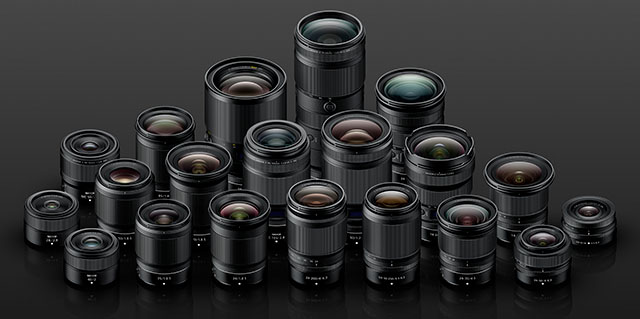
Before diving into the new lenses, it's worth pointing out that Nikon refers to the lenses as 'micro' lenses rather than 'macro' lenses. This is because Nikon's 'Micro' lenses incorporate reduction optics rather than enlarging optics. While its close-up lenses offer a 1:1 reproduction ratio, which puts them squarely in macro photography territory, the optics aren't enlarging the subject. This article will use the term 'macro' because it's essentially the industry standard.
Nikkor Z MC 50mm f/2.8
The Nikkor Z MC 50mm f/2.8 lens is designed to be a compact macro lens. It's portable while still allowing you to get very close to your subject. It's also a faster lens than a standard kit lens. It's essentially a standard prime lens with a bright maximum aperture and macro capabilities. The lens has a 1:1 maximum reproduction thanks to its minimum focus distance of 0.16m (0.53 feet).
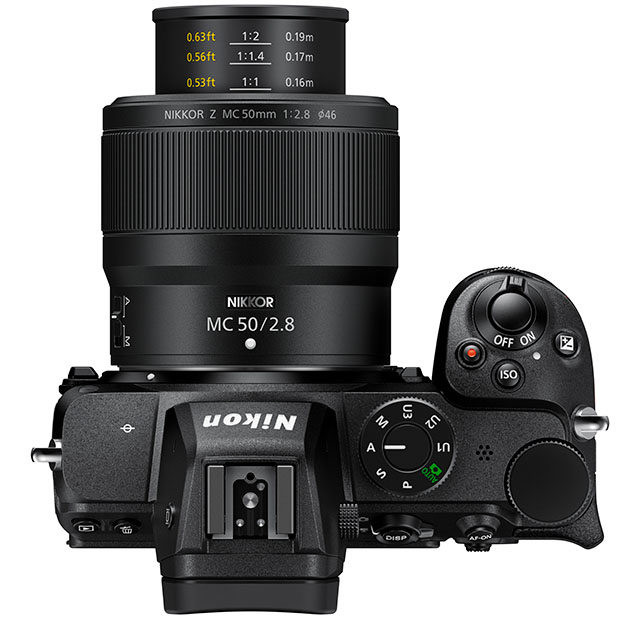
It's not an S Line lens, but Nikon promises strong optical performance and smooth bokeh. It's a small, sharp design with dust and drip resistance, although Nikon isn't going so far as to say that it is weather sealed. The lens weighs only 260 grams (9.2 ounces), 40% lighter than the AF-S Micro Nikkor 60mm f/2.8G ED lens. The new 50mm micro lens is 66mm (2.6") long with a maximum diameter of 74.5mm (3").
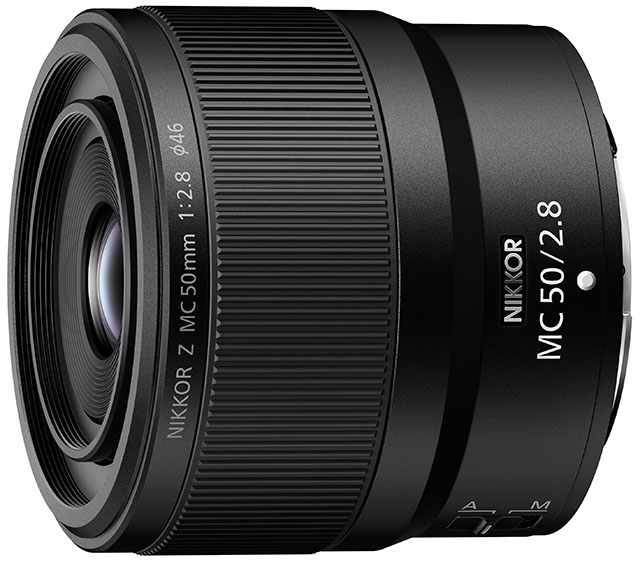
The is not internally focusing. Rather, as you focus closer, the lens barrel extends, exposing minimum focus distance and reproduction ratio markings printed on the lens barrel. The lens has a control ring, which is also available to use for manual focus. The lens includes a metal mount a lens hood. The filter thread is 46mm.
In total, the lens includes 10 elements in 7 groups. There's a single ED element and an aspherical element. Autofocus is driven using a combination of STM technology and a GMR stepping motor.

The Nikkor Z MC 50mm is also compatible with Nikon's ES-2 film digitizing adapter set. You can screw this adapter set onto the front of the lens for digitizing 35mm film.
The Nikkor Z MC 50mm f/2.8 lens will be available starting June 24 for a suggested price of $649.95.
Nikkor Z MC 105mm f/2.8 VR S
The Nikon Z MC 105mm f/2.8 VR S lens is a 1:1 macro lens with built-in vibration reduction (VR). When paired with the in-body image stabilization (IBIS) available in some of Nikon's Z cameras, including its Z6 and Z7 series cameras, the 105mm f/2.8 VR S promises up to 4.5 stops of VR. This is a full stop better than its F mount counterpart, which utilizes 2-axis stabilization rather than 5-axis stabilization. The MC 105mm f/2.8 VR S is the third FX-format Z lens with built-in VR.
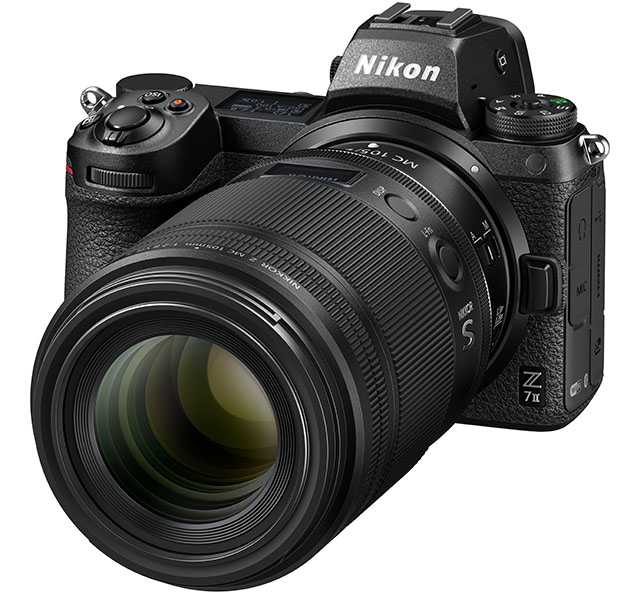
To achieve 1:1 reproduction, the lens has a minimum focusing distance of 0.29m (0.96'). At this distance, the lens has a maximum aperture of f/4.5 rather than f/2.8. This isn't unusual for Nikon's micro lenses, as it has been the case before, including with the AF Micro 105mm f/2.8D lens, which has a max aperture of f/5.0 at its 1:1 focusing distance. The AF Micro ED 200mm f/4 D ED lens slows down to f/5.3 at 1:1.
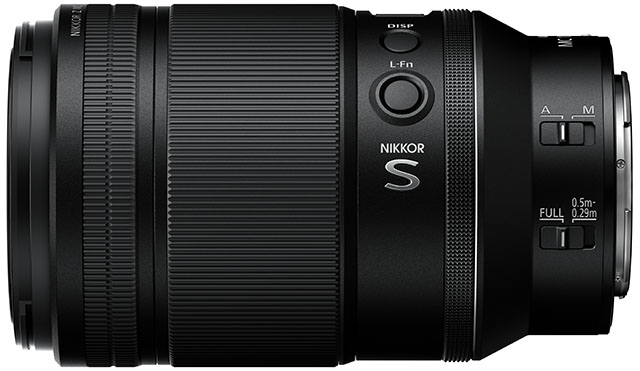
Nikon promises reliable, smooth, quick and accurate autofocus performance with its new 105mm macro lens. The lens incorporates a multi-focus STM system. The multi-focus system comprises two motors moving a pair of distinct groupings of elements within the lens. This focusing system positively impacts image quality, promising less chromatic aberration, fringing, and color bleeding. In terms of autofocus speed, a new AF algorithm promises improved performance in changing light conditions. To improve focusing speed at macro distances, a focus limiter switch allows you to set the lens to focus only at close-focus distances to a maximum of 0.5m (1.6').
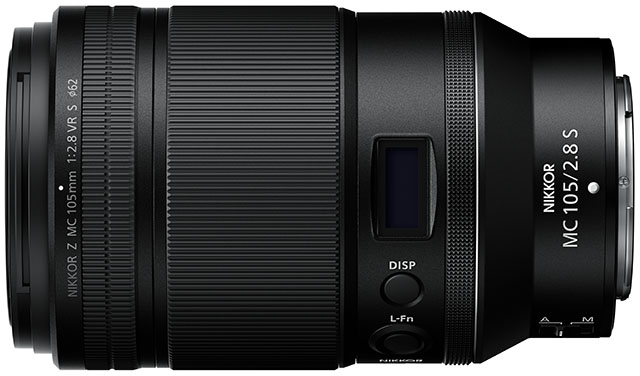
Along with the STM system, the lens promises edge-to-edge sharpness and clean bokeh due to advanced optical technologies. The Nikkor Z MC 105mm f/2.8 VR S, unlike the Nikkor Z MC 50mm f/2.8, is part of Nikon's S Line. The S Line has an even higher standard than Nikon's gold ring F mount lenses. As an S Line lens, the 105mm macro includes Nano Crystal Coating and ARNEO coating to suppress flare and ghosting effects. In terms of glass, the lens includes 16 elements across 11 groups. Among the 16 elements are a trio of ED elements and a single aspherical lens. The aspherical element is large and at the rear of the lens, which Nikon states help reduce field curvature from infinity to close-up.
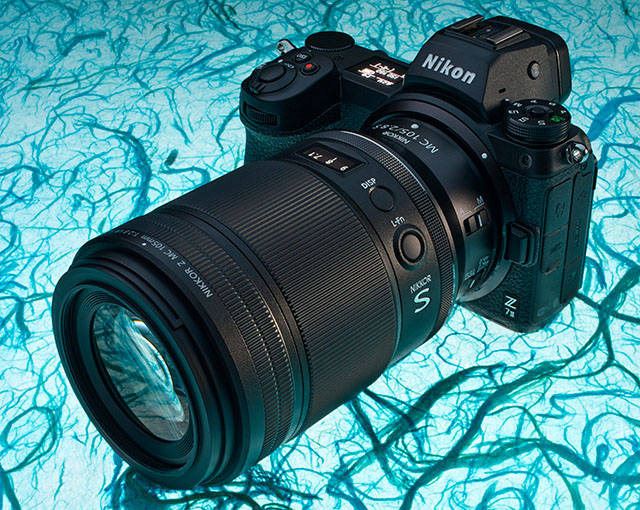
The lens internally focuses, meaning that its length doesn't change with focal distance. The lens is weather-sealed as well, ensuring it withstands the rigors of professional use. The front element also includes fluorine coating, making it scratch-resistant and easier to clean. The new macro lens includes a focus ring, lens function button, control ring, limiter switch and lens info panel. The info panel can display distance, aperture and ISO as well as reproduction ratio, which is a first for the Nikon Z system lens. You may also notice updated branding, in the form of a new metallic Nikkor S badge on the lens, which we expect to see on future S Line lenses.

The lens weighs 630g (22.3 oz.), which is 90 grams lighter than Nikon's F mount 105mm f/2.8 VR macro lens. The new Nikkor Z MC lens is 140mm (5.6") long with a maximum diameter of 85mm (3.4"). The lens has a 62mm filter thread and ships with a round locking lens hood.

Nikon Ambassador Joey Terrill used the new 105mm lens ahead of its unveiling and had this to say, 'The NIKKOR Z MC 105mm f/2.8 VR S is unquestionably the most exceptional lens I've ever used. The clarity, color fidelity, and breathtaking sharpness are present in every image. Pictures feel textural and dimensional while maintaining stunning subject accuracy. It is the perfect match for the extraordinary resolution and expansive dynamic range of the Z camera sensors, and the nuance from tone to tone feels as pure as photography can be. It's very likely this lens will be permanently affixed to my camera going forward.'
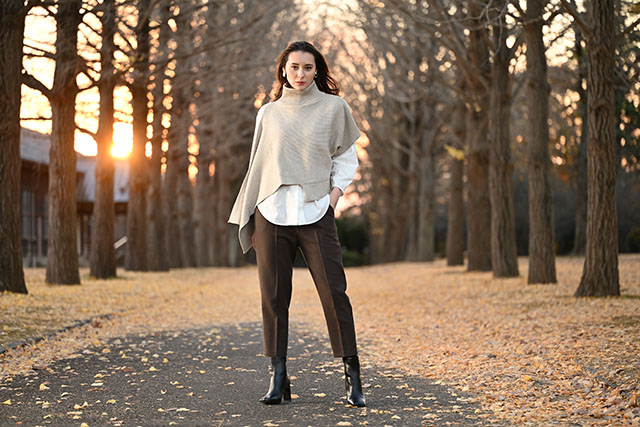
The Nikkor Z MC 105mm f/2.8 VR S lens will begin shipping on June 24 with a suggested retail price of $999.95.
Looking ahead
With the addition of these two new macro lenses, there are now 18 native Nikon Z lenses. However, Nikon will be releasing a couple more lenses later this year, the Nikkor Z 28mm f/2.8 and Nikkor Z 40mm f/2. The compact and lightweight lenses are designed for full-frame Nikon Z cameras, and Nikon states that they will be 'small, simple to use and great companions for both full-frame and DX-format Z series users.'
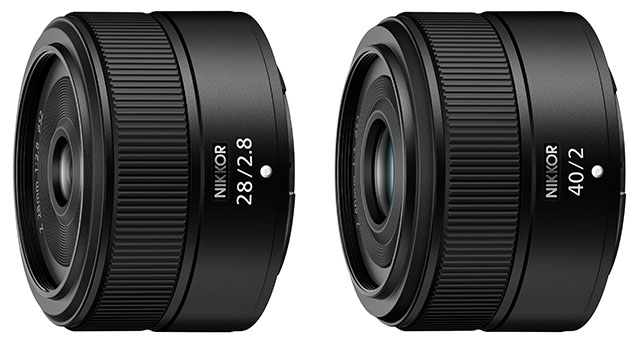
Looking ahead to next year, Nikon hopes to have as many as 29 lenses (including the teleconverters) by the end of 2022. The Z system hasn't reached the level of the Nikon F mount, of course, but it's making very rapid progress.